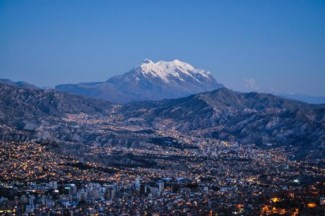How does living at high altitude affect the human body? It’s a complicated question that researchers have been trying to answer for years.
It takes two things to grow: adequate nutrition and the body’s ability to convert calories into energy. Observations over 20 years at the Ebert Family Clinic suggest that the decreased oxygen levels at altitude may interfere with optimal utilization of calories or decrease appetite and intake in small children.
After opening her pediatric clinic in Frisco, CO in 2000, Dr. Christine Ebert-Santos noticed that children living at high altitude are smaller than average. Dr. Chris and Meredith Caines Pollaro, an occupational therapist with expertise in feeding and growth in children, organized a group for parents of underweight children but did not find any consistent abnormalities. After this, Dr. Chris decided that smaller growth might be a normal pattern for little ones at altitude. The children were otherwise healthy, with nutritional analysis showing adequate intake, and no signs of endocrine or gastrointestinal problems.

Research on growth in children at altitude is sparse. So, in 2009, Dr. Chris recruited her daughter Anicia Santos to launch a detailed data analysis. Anicia worked with one of her math professors at the University of Colorado to convert the data into a unique growth chart for altitude which demonstrated the downward shift. Twice the number of infants and toddlers had weights below the 3rd percentile of the World Health Organization growth charts than at lower altitudes. Heights were also decreased. After years of gathering data, Dr. Chris and Anicia are getting ready to share their findings with the help of Logan Spector, PhD and graduate student Aaron Clark.
Spector, chairman of the department of epidemiology at the University of Minnesota, was concerned about his two nieces who lived in Summit County who were not fitting into the “normal” growth pattern. This sparked his interest in Dr. Chris’ research. He was able to recruit Clark to take on the project.
In the first study of its kind in North America, the growth charts of 970 kids living in Colorado’s high country are analyzed. With over 9,000 pieces of data, one thing is clear. From birth to 18 months of age, children living at altitude weigh much less than the average child. Length is also considerably decreased, though the weight discrepancies are more drastic. These findings were studied extensively and found to be statistically significant. Using the generalized estimating equation (GEE), Clark was able to analyze the data in a non-linear way. This compensates for correlated data. Clark created density graphs for both male and female children to depict these findings (see figures). When the graph line is fairly close to 1 on the y-axis, or a straight line across the top, this means there is little difference from the standard growth chart (age 2-18). The farther away from 1 on the y-axis, the more significant difference there is compared to standard growth charts (age 0-2).




There is no denying that something is causing these high-altitude children to fall off of the growth charts. The next logical question would be, what are the effects of this smaller growth rate? Initial research shows that children at altitude are catching up on the growth curve by age two. There does not appear to be any long-lasting deficits from the initial smaller growth.
After combing through research articles, a new study from Ladakh, India also displayed a correlation between children living at high altitude and smaller size. Specifically in Colorado, another study shows lower birth weights at high altitude, however, it does not follow the growth patterns of the children over time.
From what this research shows, a unique growth chart for children living at high altitude would be helpful. A new growth chart would account for the variations in size seen at altitude. This could save thousands of dollars in unnecessary testing looking for underlying disease or endocrine deficiencies as well as the anxiety for parents being told that their child has failure to thrive or is not being fed. Instead of being concerned when a child falls low on the growth chart, one might expect to see smaller children at altitude.
There is still much research to be done in this field. Hopefully, this study will serve as fuel for future studies.

Laura Van Steyn is a 3rd year Physician Assistant student studying at Midwestern University in Glendale, AZ. She graduated from the University of Colorado in Boulder with a degree in integrative physiology. After that, she worked as a CNA at Littleton Adventist Hospital prior to starting PA school. She hopes to work in women’s health or dermatology after graduating. During her six weeks at Ebert Family Clinic, she has joined Dr. Chris for numerous hikes and has truly enjoyed escaping the Arizona summer heat!
References
Yang, W.-C.; Fu, C.-M.; Su, B.-W.; Ouyang, C.-M.; Yang, K.-C. Child Growth Curves in High-Altitude Ladakh: Results from a Cohort Study. Int. J. Environ. Res. Public Health 2020, 17, 3652.
Bailey, B.; Donnelly, M.; Bol, K.; Moore, L.; Julian, C. High Altitude Continues to Reduce Birth Weights in Colorado. Matern Child Health J 2019, 23(11): 1573-1580
































